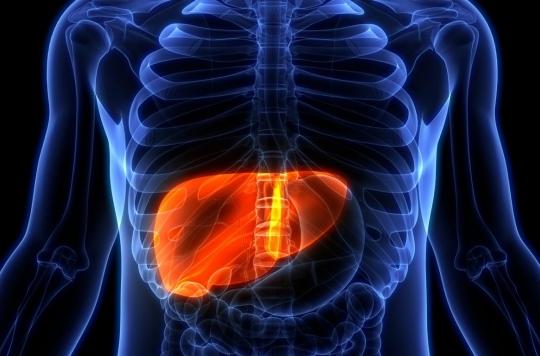Called clathrin, this cell membrane molecule is, according to the researchers behind its discovery, involved in the development and progression of liver cancer.

Affecting 8,200 patients each year, 80% of whom are men, liver cancer is characterized by the appearance and development of one or more cancerous nodules on the organ. Most often fatal, it is often diagnosed too late due to its silent nature.
Its most common form is hepatocellular carcinoma, which starts in the cells that make up most of the liver (called hepatocytes). Hepatocellular carcinoma develops most often in people who have a damaged liver, such as during alcoholic, viral or toxic cirrhosis.
For the first time, researchers from the Bellvitge Biomedical Research Institute (IDIBELL) in Barcelona have just identified a cell membrane protein involved in the development and progression of hepatocellular carcinoma. Their results have just been published in the Journal of Hepatology.
A correlation between clathrin and TGF-beta levels
Called clathrin, this protein plays a key role in endocytosis, ie the process of internalizing molecules from the extracellular space into the cell. In the case of this new research, the team of scientists showed that invading liver cells had high levels of clathrin. Specifically, the researchers showed that high levels of clathrin expression correlate with the pro-tumorigenic activation of another protein, called TGF-beta.
This plays a dual role: under normal conditions or in the early stages of cancer, TGF-beta acts as a tumor suppressor, which promotes the death of invasive cells and therefore reduces tumor growth. On the other hand, in the advanced stages of liver cancer, the tumor cells have acquired the ability to respond to the TGF-beta protein: this protein therefore contributes to the spread of the tumour.
This new work shows the role of clathrin in this process: by playing a role in the endocytosis of tumor cells, it allows their expression and invasive development.
Tests conducted in humans have shown that patients with hepatocellular carcinoma with high levels of TGF-beta and clathrin would show poorer diagnosis and reduced survival.
New therapeutic avenues
For Dr. Isabel Fabregat, professor at the Faculty of Medicine and Health Sciences at the University of Barcelona and CIBER researcher in liver and digestive diseases, these results are encouraging because they open the way to new targeted treatments for patients with liver cancer: it will thus be possible to analyze the expression levels of clathrin in liver biopsies to select patients who will benefit from a much more targeted and personalized therapy. “Determination of clathrin expression levels in samples from patients with hepatocellular carcinoma can be of great help in selecting those who can receive therapy based on TGF-beta pathway inhibitors,” concludes -she.

.
















